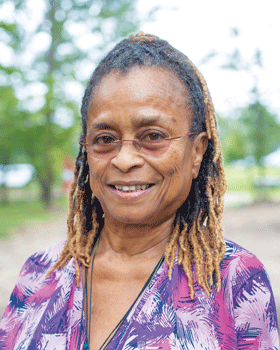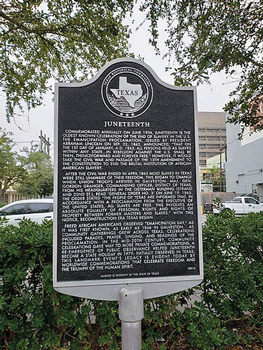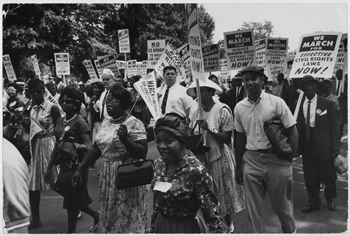 In honor of June 19th, known as Juneteenth, Up & Coming Weekly sat down with Dr. Carla Fagan, Director of the Social Work Program and Associate Professor of Social Work at Methodist University. We asked her to help us understand the history and continued relevance of Juneteenth.
In honor of June 19th, known as Juneteenth, Up & Coming Weekly sat down with Dr. Carla Fagan, Director of the Social Work Program and Associate Professor of Social Work at Methodist University. We asked her to help us understand the history and continued relevance of Juneteenth.
Can you explain the significance of Juneteenth?
Dr. Fagan: Juneteenth is short for June 19th. On June 19, 1865, Major Gen. Gordon Granger arrived in Galveston Bay, Texas, with orders to read General Order Number 3 — a proclamation stating that all enslaved people were to be set free. “The people of Texas are informed that in accordance with a Proclamation from the Executive of the United States, all slaves are free. This involved an absolute equality of rights and rights of property between former masters and slaves, and the connection heretofore existing between them becomes that between employer and hired laborer.”
Most people know that Lincoln issued the Emancipation Proclamation on January 1, 1863, freeing enslaved people. There are many versions of why this news did not reach Texas, but it did not until June 19, 1865.
For African American people, Juneteenth is Independence Day, Freedom Day - the official end to enslavement. Juneteenth represents many different things to different people. Juneteenth is a day to remember, a new beginning. It is a day to celebrate the resilience of our people, to bring families together to reflect, to educate, raise awareness about the many challenges faced by African Americans — how far we have come and how far, still, we have to go, to reach that place of total freedom, equality, equity and inclusion.
How does Juneteenth compare to other days of remembrances?
Dr. Fagan: Juneteenth is not as well-known as other remembrances. While it is celebrated in 48 of the 50 states, efforts to make it a national holiday have not yet been successful. Most recently, Sen. Ed Markey (D) introduced S.475-Juneteenth National Independence Day Act earlier this year. One could compare Juneteenth to Independence (July 4th), Armistice Day (now Veteran’s Day-Nov. 11th), or International Holocaust Remembrance Day (January 27th). These days of remembrance are about freedom — the end of British rule, the end of WWI, the freeing of the Jewish people in Auschwitz. All represent a new beginning, as does Juneteenth. All represent the mandated end of oppression, enslavement, genocide, but also signal the beginning of a new struggle to keep the freedoms won. Juneteenth inspires African Americans to remember the resilience of our ancestors, celebrate their victories and educate and motivate our children to follow their dreams.
How do you celebrate Juneteenth personally, and how can others?
Dr. Fagan: As an African American woman, Juneteenth is a great time to reflect on who I am, where I came from and where I am going. I take great pride in my heritage. My people have had to be stronger, more resilient, more determined and more skilled, just to survive. Historically, African Americans have had to be twice as good to get half as far. Living while Black can be hazardous to one’s health if one does not remain ever vigilant and wary. Living with micro-aggressions and being the target of explicit and implicit bias can be very tiring and wearing on the psyche. Juneteenth is a time of reflection, new inspiration and renewal.
“We’ve come this far by faith, leaning on the Lord, trusting in his Holy Word, He’s never failed me yet…” (lyrics by Carlton Pearson). Juneteenth is a time to renew spirit, mind and body.
Juneteenth is a time to spend with family, reconnect with our history, our heritage and share this heritage with others. Juneteenth celebrations are filled with educational activities, family reunions, games, decorations, symbols, sharing all the greatness of African American history. Juneteenth is also an opportunity for African Americans to embrace others and share our history with the rest of the world. This world can only celebrate diversity, equity and inclusion if we all learn to practice these principles in our everyday lives.
How can we honor Juneteenth and be better allies in general?
Dr. Fagan: This country has committed a huge disservice to all people in that history has been distorted, sanitized and plain lied about. There are hundreds of historians who have carefully researched American history and have exposed the many untruths told in our history books. Recently, many more people are becoming aware of this and are asking to learn the “truth.” The willingness of people to recognize the distortions in our history books is a first step to learning the truth. Education, affirmation, understanding, all play an important part in laying bare the real history of this country.
Why did it take 2 1/2 years for the enslaved people of Texas to learn that they had been free for 2 1/2 years? Why, in 2021, are African Americans still fighting for the right to vote? Why must I teach my son how to respond if stopped by the police? Why must I still be twice as good to get half as far?
Allies have stepped up all through the Civil Rights Movements and have marched shoulder to shoulder, sacrificed their lives and freedom, stood by to the end. That kind of commitment is still vital in the struggle of African Americans to achieve equity and inclusion.
Considering recent events and the racial injustices being highlighted in the country, what can we do as individuals in terms of activism, education and more, to be supportive and fight injustice?
Dr. Fagan: Fighting injustice requires one to be a strong proponent of social justice, equity, inclusion and diversity. Having said that, one must be willing to learn, think, examine one’s personal values and take a stand.
The Black Lives Matter movement encompasses people from all races, ethnicities, etc. This has been somewhat downplayed by media. Black Lives Matter is a vehicle through which all people can take a stand for equity and inclusion. Over fifty years ago, the Freedom Riders, young people — Black and white — risked their lives to integrate interstate transportation. They took a stand.
One of the ways change takes place is by communicating, one-on-one, with a person with a different point of view. We must communicate with people who view African Americans as less than, and, one by one, deconstruct their arguments. This requires that we have the facts to back up our points. There are still people out there who respond positively to facts.
When you witness a micro-aggression or implicit bias, don’t just ignore it. If someone tells a racist joke in your presence, call them on it. We must learn to have the courage of our convictions.
If you witness unwarranted aggression against African Americans, speak up. And, yes, doing the right thing is not always the easiest thing.
Elected officials at every level make policy that impacts social justice. We must elect people to office who support equity and inclusion. Sadly, we have learned that bias transcends political party. We must carefully scrutinize the positions of candidates regarding social justice.
Are there any books, clubs, movies that can help educate people?
Dr. Fagan: There is a wealth of information out there. We just need to want to find it. Some of my favorites are: “13th “ directed by Ava Duvernay on YouTube and Netflix; “Amend” on Netflix, and any book written by Ibram X. Kendi (“Stamped From the Beginning”). Authors James Baldwin, Audre Lorde, bell hooks, Michelle Alexander, Ijeoma Oluo are among my favorites. Circa 1865 is an organiza
tion in Fayetteville that will sponsor a Juneteenth Virtual Festival this year. Organizing Against Racism Cumberland County is committed to educate the community and take action against racial inequities, wherever they exist. Juneteenth.com, is a repository of information about this historic day.
You marched and participated in the civil rights movement in the 1960s. What can you share about your experiences?
Dr. Fagan: Growing up in New York City, I did not regularly experience overt racism. I could eat a hotdog and drink a Nehi at the counter in Woolworths on 125th Street in Harlem as a child in the early 1950’s thanks to the efforts of Adam Clayton Powell. I remember visiting family in North Carolina, moving to the back of the bus, drinking from the “colored” water fountain, sitting in the balcony in the movie theater in Plymouth, North Carolina, and not fully understanding why.
I first became aware of the bigger issues at age 10 when I brought an article for current events to school that was about a boycott in Clarendon County, South Carolina. When my teacher asked me why I chose that article, my response was that I felt sorry for the people who were conducting the boycott because they were losing their jobs because they were fighting for civil rights. Further discussion led to a food drive by my elementary school to support the people of Clarendon County participating in the boycott.
Growing up in New York City (Brooklyn) gave me opportunities I probably would never have had in other parts of the country. I attended Hunter College High School after elementary school. I had to pass a test to get into Hunter. I attended City College of New York (now City College of CUNY) — free tuition — and am a founding member of the Onyx Society, the first Black student organization at CCNY.
Upon graduation, I worked full time in corporate New York. I joined the Student Non-Violent Coordinating Committee (SNCC) and volunteered in the New York office. I later joined the Black Panther Party. The activism of my youth taught me many lessons. I learned that the country that I thought I was a citizen in was the country that wanted to keep me oppressed, depressed and a failure. But I was blessed to have the tools to fight back and that is what I did.
Is there a parting thought you’d like to share with our readers?
Dr. Fagan: If you shake a bottle of soda and take off the top, the explosion is all that Juneteenth brings forth when an African American is asked to respond to it. Juneteenth is celebration, introspection, raising awareness, intrusion, education, frustration. Juneteenth can invoke anger, pain, grief, emotions that keep us connected to our reality. This is a huge topic, needing much more than one article to do it justice, but this is a good start. Thank you for the opportunity!
Pictured above 
 : Dr. Carla Fagan
: Dr. Carla Fagan
Pictured on left: Photograph of the Civil Rights March on Washington Aug. 28, 1963. (photo courtsey National Archives)
Pictured on right: A plaque in Texas commemorates Juneteenth. (photo courtesy of Wikipedia)